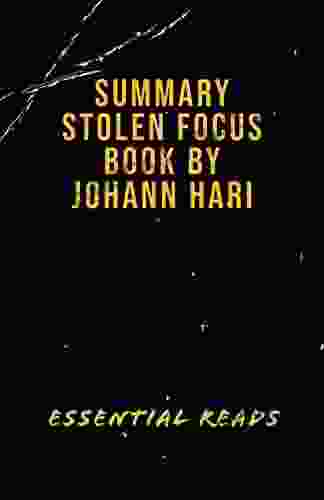Unleashing the Secrets of the Rage Circuit: A Comprehensive Guide to Understanding and Managing Your Anger

Anger is a powerful emotion that can have a profound impact on our lives. It can motivate us to fight for what we believe in, but it can also lead to violence and destruction. For decades, scientists have been studying the Rage Circuit, a complex network of brain regions that plays a key role in anger and aggression. In this comprehensive guide, we will delve into the fascinating world of the Rage Circuit, exploring its anatomy, function, and how we can harness it for positive outcomes.
The Rage Circuit is a collection of brain regions that are involved in the experience and expression of anger. These regions include the amygdala, hippocampus, hypothalamus, and prefrontal cortex. The amygdala is responsible for detecting threats and triggering the body's fight-or-flight response. The hippocampus helps us to remember past experiences, which can influence our response to current threats. The hypothalamus controls the body's autonomic nervous system, which regulates heart rate, breathing, and other physiological responses to anger. The prefrontal cortex helps us to control our impulses and make decisions.
When we experience a threat, the amygdala sends a signal to the hypothalamus, which activates the fight-or-flight response. The heart rate and breathing increase, and the body releases hormones such as adrenaline and cortisol. If the threat is perceived as serious, the amygdala also sends a signal to the prefrontal cortex, which helps us to assess the situation and make a decision about how to respond.
4.2 out of 5
| Language | : | English |
| File size | : | 1755 KB |
| Text-to-Speech | : | Enabled |
| Screen Reader | : | Supported |
| Enhanced typesetting | : | Enabled |
| Word Wise | : | Enabled |
| Print length | : | 408 pages |
The Rage Circuit plays a key role in both normal and pathological aggression. Normal aggression is a natural response to threats and can be used to defend oneself or others. Pathological aggression, on the other hand, is excessive and uncontrolled, and can lead to violence and destruction.
Research has shown that hyperactivity in the Rage Circuit is linked to aggressive behavior. People who have a history of violence or aggression have been found to have higher levels of activity in the amygdala and hypothalamus. They are also more likely to have reduced activity in the prefrontal cortex, which impairs their ability to control their impulses and make rational decisions.
While we cannot completely eliminate the Rage Circuit, we can learn to manage it so that it does not control our behavior. There are a number of strategies that we can use to do this, including:
- Cognitive reframing: This involves changing the way we think about the world and the situations that trigger our anger. By challenging our negative thoughts and assumptions, we can reduce the activity in the amygdala and promote a more balanced and rational response.
- Mindfulness meditation: Mindfulness meditation is a practice that helps us to focus on the present moment and to observe our thoughts and feelings without judgment. By training our attention to stay in the present moment, we can reduce the activity in the amygdala and improve our ability to regulate our emotions.
- Exercise: Exercise is a great way to release pent-up anger and frustration. When we exercise, the body releases endorphins, which have a calming and mood-boosting effect.
- Therapy: Therapy can be a helpful way to learn more about the Rage Circuit and how to manage it. A therapist can provide support, guidance, and tools that can help you to overcome anger problems and improve your relationships.
The Rage Circuit is a complex and powerful part of the human brain. By understanding how it works, we can learn to manage our anger and use it for positive outcomes. The strategies outlined in this guide can help you to reduce anger, improve emotional regulation, and build healthier relationships. If you are struggling with anger problems, please do not hesitate to seek help from a mental health professional.
4.2 out of 5
| Language | : | English |
| File size | : | 1755 KB |
| Text-to-Speech | : | Enabled |
| Screen Reader | : | Supported |
| Enhanced typesetting | : | Enabled |
| Word Wise | : | Enabled |
| Print length | : | 408 pages |
Do you want to contribute by writing guest posts on this blog?
Please contact us and send us a resume of previous articles that you have written.
 Book
Book Novel
Novel Page
Page Chapter
Chapter Text
Text Story
Story Genre
Genre Reader
Reader Library
Library Paperback
Paperback E-book
E-book Magazine
Magazine Newspaper
Newspaper Paragraph
Paragraph Sentence
Sentence Bookmark
Bookmark Shelf
Shelf Glossary
Glossary Bibliography
Bibliography Foreword
Foreword Preface
Preface Synopsis
Synopsis Annotation
Annotation Footnote
Footnote Manuscript
Manuscript Scroll
Scroll Codex
Codex Tome
Tome Bestseller
Bestseller Classics
Classics Library card
Library card Narrative
Narrative Biography
Biography Autobiography
Autobiography Memoir
Memoir Reference
Reference Encyclopedia
Encyclopedia Lina Rather
Lina Rather Simon Armitage
Simon Armitage Teri Halstead Rn Msn
Teri Halstead Rn Msn Robert A Weinberg
Robert A Weinberg Peter Matthiessen
Peter Matthiessen Ruth Sessler Bernstein
Ruth Sessler Bernstein Nancy Uno
Nancy Uno Ted Cadsby
Ted Cadsby Kendra Parks
Kendra Parks Kevin Hartman
Kevin Hartman Sally Spencer
Sally Spencer Kieran Higgins
Kieran Higgins Kenneth Brantingham
Kenneth Brantingham Kim M Watt
Kim M Watt R J Palacio
R J Palacio Kieran Allen
Kieran Allen Vivien Newman
Vivien Newman Steven Bradley
Steven Bradley Russell Foureagles
Russell Foureagles Lindsey Coker Luckey
Lindsey Coker Luckey
Light bulbAdvertise smarter! Our strategic ad space ensures maximum exposure. Reserve your spot today!

 Vernon BlairRight Relationship Building Whole Earth Economy: A Vision for a Sustainable...
Vernon BlairRight Relationship Building Whole Earth Economy: A Vision for a Sustainable...
 Julio CortázarTed Schofield: An Extraordinary Tale of Survival and Resilience in World War...
Julio CortázarTed Schofield: An Extraordinary Tale of Survival and Resilience in World War... Hamilton BellFollow ·7.8k
Hamilton BellFollow ·7.8k Christian BarnesFollow ·4.8k
Christian BarnesFollow ·4.8k Grant HayesFollow ·18.3k
Grant HayesFollow ·18.3k Osamu DazaiFollow ·2.2k
Osamu DazaiFollow ·2.2k Kirk HayesFollow ·11.1k
Kirk HayesFollow ·11.1k Camden MitchellFollow ·16.2k
Camden MitchellFollow ·16.2k Octavio PazFollow ·16.8k
Octavio PazFollow ·16.8k John Dos PassosFollow ·16.9k
John Dos PassosFollow ·16.9k

 Isaac Asimov
Isaac AsimovEmbark on an Epic Adventure: The Colorado Trail 9th...
Unveiling the Treasures of the Colorado...

 Clinton Reed
Clinton ReedUltimate Football Heroes: Uncover the Gridiron Greatness...
Enter the World...

 Ibrahim Blair
Ibrahim BlairUnveiling the Secrets of Stolen Focus: A Journey to...
In today's relentless digital...

 Colt Simmons
Colt SimmonsRediscover the Founding Father's Vision: Thomas Jefferson...
Immerse Yourself in the Unedited Words of...

 Juan Butler
Juan ButlerExcel in Language Learning: The Ultimate Self-Study...
Unlock Your Language Potential with Our...
4.2 out of 5
| Language | : | English |
| File size | : | 1755 KB |
| Text-to-Speech | : | Enabled |
| Screen Reader | : | Supported |
| Enhanced typesetting | : | Enabled |
| Word Wise | : | Enabled |
| Print length | : | 408 pages |










